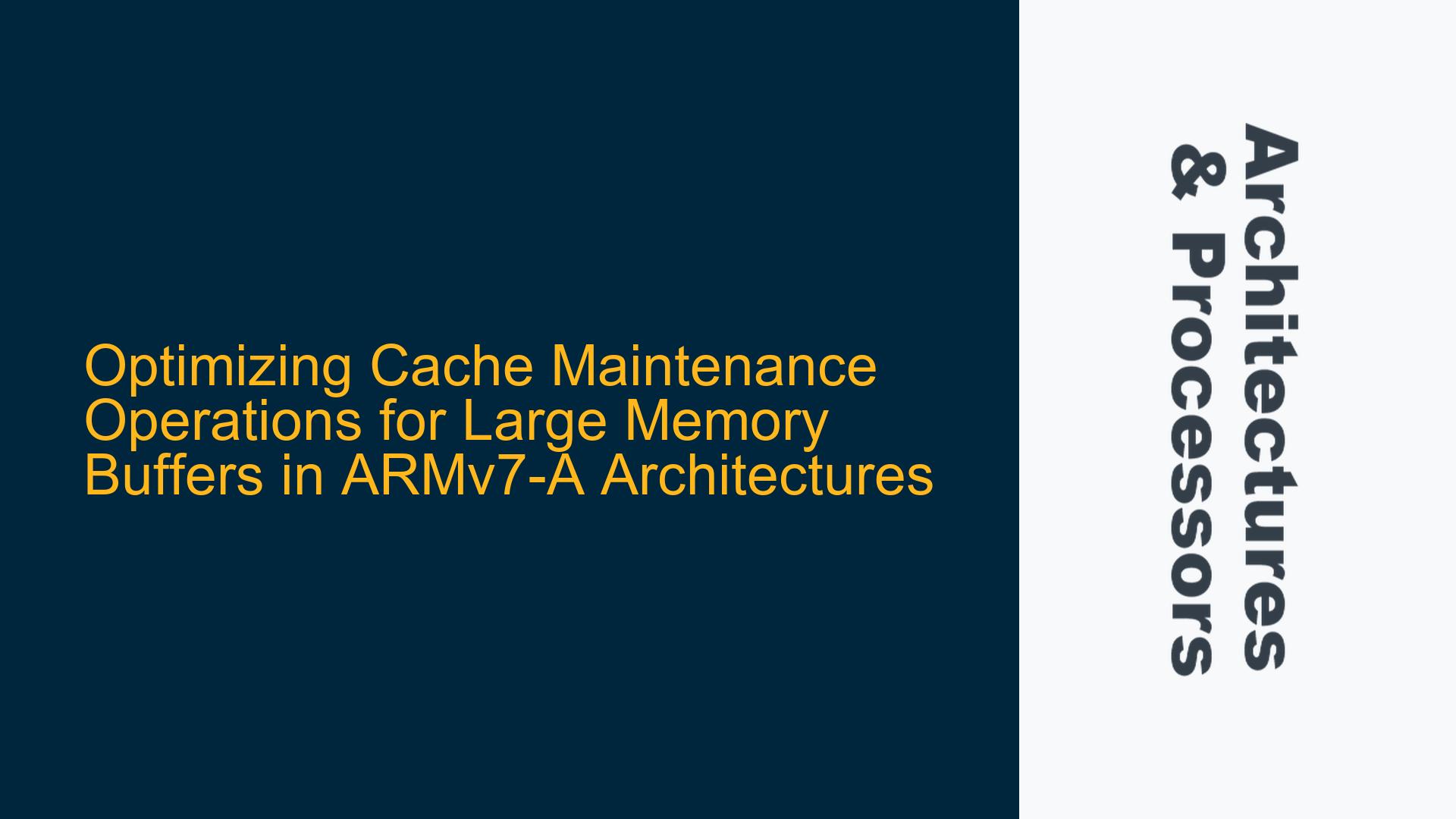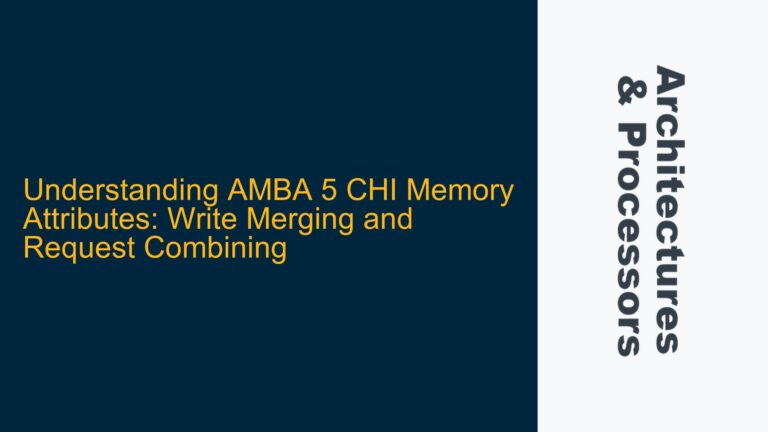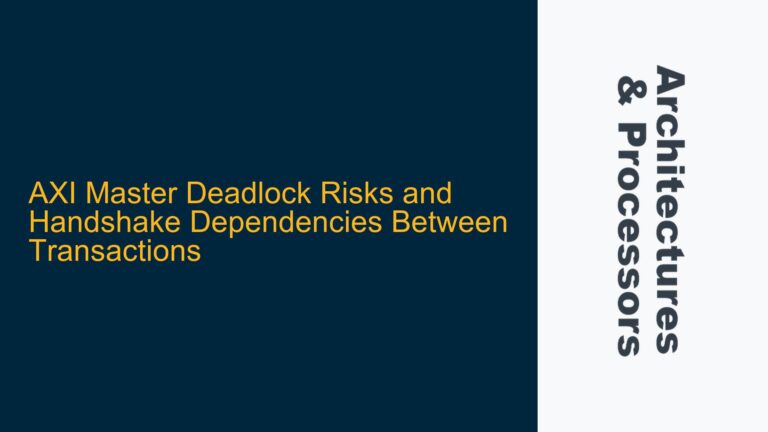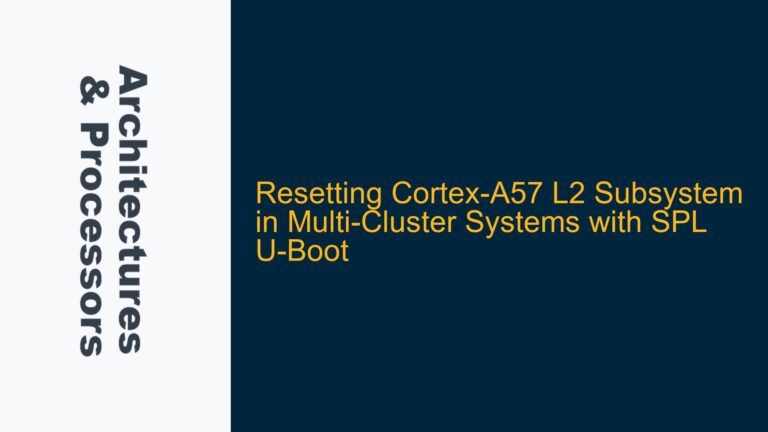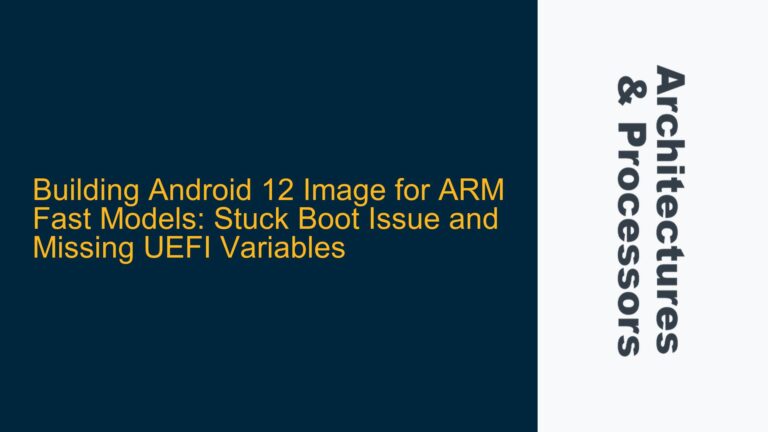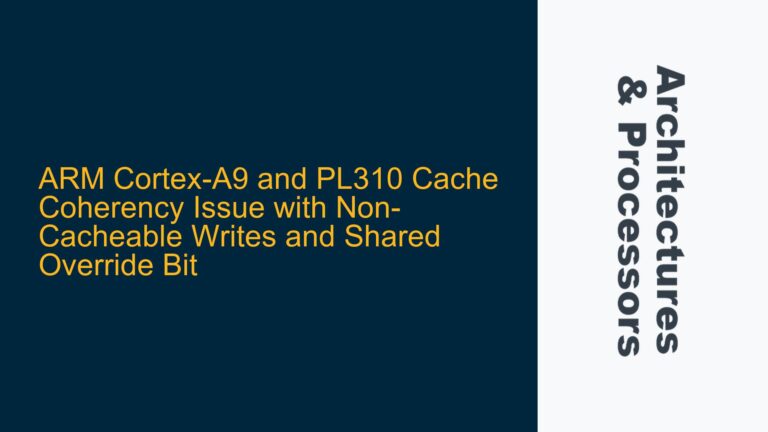ARMv7-A Cache Maintenance Overhead in Large Buffer Scenarios
In ARMv7-A architectures, cache maintenance operations are critical for ensuring data consistency between the CPU cache and main memory, especially in scenarios involving Direct Memory Access (DMA) or large memory buffers. The primary issue arises when dealing with large memory buffers, such as framebuffers for display controllers or data blocks received via high-speed interfaces like USB or Ethernet. The recommended approach for cache maintenance is to perform operations by Virtual Address (VA) rather than by set/way, except during boot or shutdown sequences. However, this approach introduces significant overhead when the memory buffer size far exceeds the cache size.
The core problem lies in the fact that cleaning or invalidating a large memory buffer by VA requires iterating over the entire buffer in steps equal to the cache line size. For example, a framebuffer of 3 MiB (e.g., for a 1366×768 resolution at 24-bit color depth) would require thousands of iterations, even though only a small fraction of the buffer might actually reside in the cache. This results in unnecessary computational overhead, as most operations will be no-ops (NOPs) for addresses not cached. In contrast, cache maintenance by set/way has a fixed runtime, independent of the buffer size, making it potentially faster for large buffers.
The challenge is further compounded by the lack of hardware cache coherency in systems like the TI Sitara AM3358 Cortex-A8 processor, where the DMA controller accesses memory directly without interacting with the CPU cache. This necessitates explicit cache maintenance to ensure data consistency, but the choice between VA-based and set/way-based methods must be carefully evaluated to avoid performance bottlenecks.
Performance Implications of VA-Based vs. Set/Way-Based Cache Maintenance
The performance disparity between VA-based and set/way-based cache maintenance stems from the underlying mechanisms of each approach. VA-based maintenance operates on a per-address basis, requiring the software to iterate through the entire memory buffer, regardless of whether the data is cached. This results in a linear increase in execution time with buffer size, as each cache line must be checked and potentially cleaned or invalidated.
In contrast, set/way-based maintenance operates on the cache structure itself, iterating through all sets and ways of the cache. This approach has a fixed runtime, as it is independent of the buffer size. For large buffers, this can be significantly faster, as it avoids the overhead of iterating through uncached addresses. However, set/way-based maintenance is generally discouraged except during boot or shutdown, as it can inadvertently affect other data in the cache, potentially leading to data corruption or loss if not handled correctly.
The Cortex-A8 processor, for instance, features a 32 KiB L1 data cache and a 256 KiB unified L2 cache. When dealing with a framebuffer of 382 KiB (for a 480×272 resolution) or larger, the VA-based approach becomes increasingly inefficient. The set/way method, while faster, risks invalidating or cleaning cache lines that contain unrelated data, which could lead to performance degradation or data integrity issues if those lines are subsequently accessed.
Implementing Efficient Cache Maintenance Strategies for ARMv7-A
To address the performance and consistency challenges of cache maintenance in ARMv7-A systems, a hybrid approach can be employed, combining the strengths of both VA-based and set/way-based methods. The following strategies provide a detailed roadmap for optimizing cache maintenance operations:
1. Selective Use of Set/Way-Based Maintenance
For large memory buffers that are unlikely to benefit from caching, such as framebuffers or DMA-received data blocks, set/way-based maintenance can be selectively used. This approach is particularly effective in single-core systems, where cache coherency with other processors is not a concern. The key steps include:
- Identifying the cache levels and their configurations (e.g., L1 and L2 cache sizes, associativity).
- Iterating through all sets and ways of each cache level to clean or invalidate the entire cache.
- Ensuring that the operation is performed atomically to prevent data corruption.
2. Optimizing VA-Based Maintenance for Partial Buffers
For scenarios where only a portion of a large buffer is cached, VA-based maintenance can be optimized by:
- Calculating the cache line size and aligning the buffer addresses to cache line boundaries.
- Using hardware performance counters or cache monitoring tools to identify which portions of the buffer are actually cached.
- Applying maintenance operations only to the cached portions, reducing the number of iterations required.
3. Leveraging Non-Cacheable Memory Regions
For buffers that are frequently accessed by DMA and rarely by the CPU, marking the memory region as non-cacheable can eliminate the need for cache maintenance altogether. This approach is particularly useful for framebuffers and network buffers, where the CPU’s access patterns do not benefit significantly from caching. The steps include:
- Configuring the Memory Protection Unit (MPU) or Memory Management Unit (MMU) to mark the buffer region as non-cacheable.
- Ensuring that the DMA controller is configured to access the buffer directly from main memory.
4. Combining Clean and Invalidate Operations
To minimize the risk of data loss during cache maintenance, clean and invalidate operations can be combined. This ensures that any dirty data in the cache is written back to main memory before being invalidated, preserving data integrity. The implementation involves:
- Using the
DCCIMVAC(Clean and Invalidate Data Cache Line by VA to PoC) instruction for VA-based maintenance. - Iterating through all sets and ways for set/way-based maintenance, ensuring that both clean and invalidate operations are performed.
5. Benchmarking and Profiling
Finally, benchmarking and profiling are essential for validating the effectiveness of the chosen cache maintenance strategy. Tools like ARM DS-5 or Linux perf can be used to measure the execution time and cache hit/miss rates for different approaches. The results can guide further optimizations and ensure that the system meets its performance requirements.
By carefully evaluating the trade-offs between VA-based and set/way-based cache maintenance and implementing the strategies outlined above, developers can achieve optimal performance and data consistency in ARMv7-A systems, even when dealing with large memory buffers.
